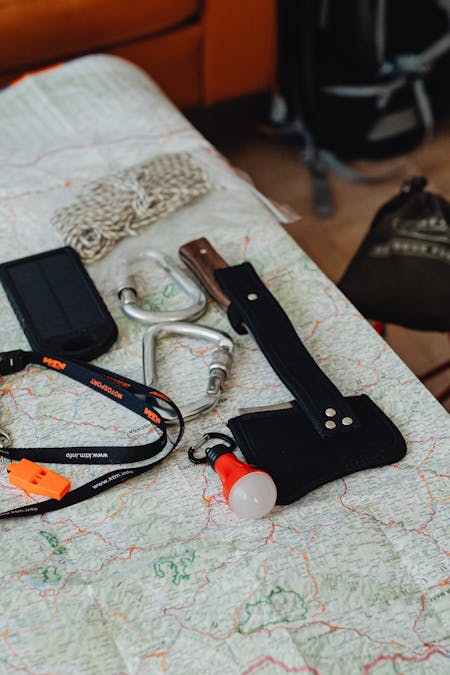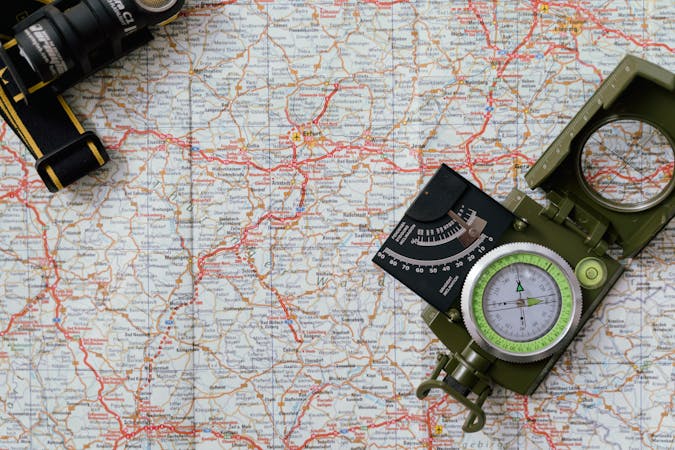
Planning a day hike is a great way to explore the outdoors, boost your fitness, and reconnect with nature—all in a single day. But to make the most of your time on the trail, it’s important to prepare properly. From selecting a suitable route to packing the right gear and understanding basic safety, this guide covers everything you need to know to plan a safe and enjoyable hiking adventure. Whether you’re exploring the Blue Mountains, trekking through a national park, or hitting your favorite local trail, these tips will help you hike smarter and with confidence. In fact, knowing how to plan a day hike could save you heartache and pain when out on the trail.
Step 1: Choose the Right Trail
Your hike starts with choosing a trail that fits your fitness level, interests, and time availability. Use trusted platforms like AllTrails, Gaia GPS, or Komoot to find options that suit your goals.
Consider these trail factors:
- Distance: Choose a distance you can comfortably manage within daylight hours.
- Elevation Gain: Steeper trails may be more challenging and affect pacing.
- Terrain: Is it rocky, muddy, or smooth? Are there creek crossings, boardwalks, or switchbacks?
- Weather Conditions: Always check both short-term and extended forecasts using trusted apps.
- Route Complexity: Familiarize yourself with trailheads, crossroads, and turnoff points.
- Permits & Closures: Visit the official website of the National Parks and Wildlife Service (NSW) or other land managers to check for track closures and permits.
- Turnback Time: Set a time to head back regardless of whether you’ve reached the destination.
Step 2: Assess Your Fitness and Skills
Make sure the hike aligns with your current abilities. If you’re just starting out:
- Learn basic navigation with a topographic map and compass before tackling complex routes.
- Begin with easier or shorter hikes and build up gradually.
- Hike with experienced friends or consider joining a bushwalking club.
Step 3: Hiking Safety: Emergency Gear, Navigation, and Communication Tools
Let someone know your plans, including:
- Your exact trail name and start/end locations
- Expected return time
Safety Essentials to Bring:
- First Aid Kit
- Map and Compass or a GPS device like Garmin eTrex
- Navigation app with offline maps (e.g., Gaia GPS, AllTrails)
- Personal Locator Beacon (PLB) or satellite communicator (e.g., Garmin inReach Mini) for remote areas
Be aware of hazards such as:
- Wildlife encounters
- Hypothermia from weather changes
- Dehydration or heat exhaustion

Step 4: The Ten Essentials for Day Hikes: What Every Hiker Should Pack
The Ten Essentials system, recommended by groups like the American Hiking Society, helps you prepare for unexpected situations:
- Navigation – Map, compass, or GPS
- Hydration – Enough water for the entire hike or a Lifestraw filter
- Nutrition – High-energy snacks like trail mix or jerky
- Sun Protection – Sunscreen, sunglasses, hat
- Extra Clothing – Lightweight GORE-TEX rain jacket, merino layers
- First Aid Supplies
- Fire – Waterproof matches, lighter, or fire starter
- Repair Kit & Tools – Multi-tool, duct tape
- Emergency Shelter – Bivvy sack or lightweight tarp
- Light Source – Headlamp with extra batteries
Extras: Trekking poles (e.g., Black Diamond), insect repellent, and satellite messenger if you’re hiking off-grid.
Step 5: Check the Weather Forecast
Monitor the weather leading up to and on the day of your hike:
- Use apps like WillyWeather or BOM (Bureau of Meteorology) for Australian conditions
- Pack layers and rain gear regardless of the forecast
- Modify or cancel your hike if storms or fire danger are forecast
Step 6: Practice Hiking Etiquette
Respect the environment and fellow hikers by following the Leave No Trace principles from the Leave No Trace Center for Outdoor Ethics:
- Stay on marked trails
- Pack out all rubbish (even biodegradable items)
- Keep pets leashed where permitted
- Do not pick flowers or damage flora
- Yield to uphill hikers
Step 7: Bugs, Ticks, and Wildlife
Australia’s trails are home to incredible creatures—and a few pests:
- Use DEET-based or picaridin repellents
- Avoid bush-bashing through dense grass to reduce tick exposure
- Learn to identify the paralysis tick (Ixodes holocyclus)
- Observe wildlife like kangaroos, goannas, or lyrebirds from a distance
For more details, read my tick safety guide.
Step 8: Find the Joy
Remember that hiking is about connecting with nature and yourself. Take breaks, photograph landscapes, bring a field guide to identify native plants, or journal your hike. Every trail offers a new perspective.
Glossary of Day Hiking Terms
- AllTrails: A popular hiking app and website for discovering trails, reading reviews, and viewing maps.
- Bivvy Sack: A lightweight emergency shelter used as a minimalist alternative to a tent.
- Boardwalks: Raised wooden walkways used in wet or sensitive areas of a trail.
- Bushwalking Club: A group or organisation for people who enjoy hiking or walking in natural areas, common in Australia.
- Compass: A navigational instrument that shows direction relative to the Earth’s magnetic poles.
- Creek Crossing: A section of trail where hikers must cross a flowing body of water.
- Elevation Gain: The total amount of vertical climbing on a hike, measured in metres or feet.
- First Aid Kit: A pack containing medical supplies for treating injuries or emergencies on the trail.
- Garmin inReach Mini: A compact satellite communicator that allows two-way messaging and SOS alerts in remote areas.
- Gaia GPS: A navigation app with detailed topographic maps and GPS tracking for outdoor adventures.
- GORE-TEX: A waterproof, breathable fabric commonly used in outdoor jackets and boots.
- Leave No Trace: A set of environmental ethics promoting conservation and responsible outdoor recreation.
- Lifestraw: A portable water filter that allows you to safely drink from lakes, rivers, or streams.
- Navigation Tools: Devices like maps, compasses, and GPS units used to stay on route while hiking.
- Paralysis Tick (Ixodes holocyclus): A species of tick found in Australia that can cause tick paralysis if not removed promptly.
- Personal Locator Beacon (PLB): A device that transmits your location to emergency services when activated.
- Switchbacks: Zig-zag trail sections that help reduce steepness and erosion on hilly terrain.
- Topographic Map: A detailed map showing elevation contours, landforms, and trails, used for navigation.
- Trailhead: The starting point of a trail or hike.
- Turnback Time: A pre-set time at which hikers should turn around to ensure they return before dark.
- WillyWeather / BOM: Australian weather forecasting tools for checking trail conditions before hiking.
Final Thoughts
Planning a day hike is part of the adventure. With the right preparation, gear, and mindset, your hike can be safe, comfortable, and deeply rewarding. Whether you’re hiking solo or with friends, take time to enjoy the journey—and leave the trail better than you found it.
Happy hiking!

Great tips! I love how you’ve broken down the planning process into manageable steps, especially emphasizing the importance of checking the weather and packing the right gear. One thing I’ve found helpful for day hikes is carrying a small first-aid kit and a backup battery for my phone, just in case of emergencies. Do you have any favorite apps or tools for navigation on the trail? Thanks for sharing such a practical guide!
Hi Tony,
Thanks for your comments. I always have a first aid kit and carry a power bank.
I generally use AllTrails.
Planning a day hike is such a fulfilling activity! From personal experience, taking the time to map out your trail and pack the essentials really makes all the difference. One of my most memorable hikes involved a steep trail with unexpected weather changes—I was so thankful I had packed extra layers and a rain jacket!
I absolutely agree with the emphasis on safety and preparedness in this guide. Letting someone know your plans and having a reliable navigation tool is crucial, especially for less-traveled trails. And I can’t stress enough the importance of practicing Leave No Trace principles—nothing beats enjoying a pristine trail and knowing you’re helping keep it that way for others.
Hiking truly allows you to connect with nature, and with the right planning, every adventure becomes a story worth remembering. This blog does a fantastic job breaking down the essentials for anyone, whether they’re new to hiking or experienced!